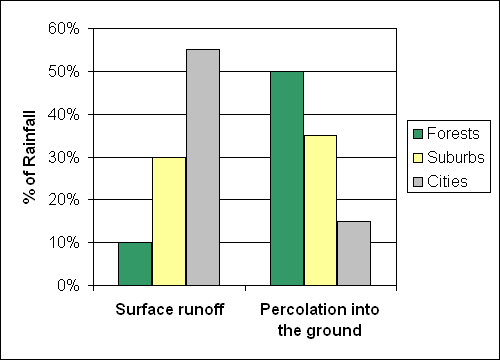
 |
|
|
How do impervious surfaces affect water quantity and quality? 
As land gets developed, more water runs off and gets carried through ditches into streams and lakes. This means that less water seeps into the ground to become groundwater. As a result, streams flood more quickly and reach higher flood stages. Between floods, water levels drop to lower levels because there is less groundwater to trickle into the stream during dry periods. This may make the water too warm and the current too slow to support trout and other sensitive kinds of aquatic life. Research suggests that when as little as 15% of a watershed becomes covered with impervious surfaces, the frequency of floods and droughts will increase, and stream life will be harmed. This raises many questions about the relationships among runoff, land use, and stream hydrology, and how watersheds can be managed to protect water resources. What ditch research is being carried out at Cornell University?
|